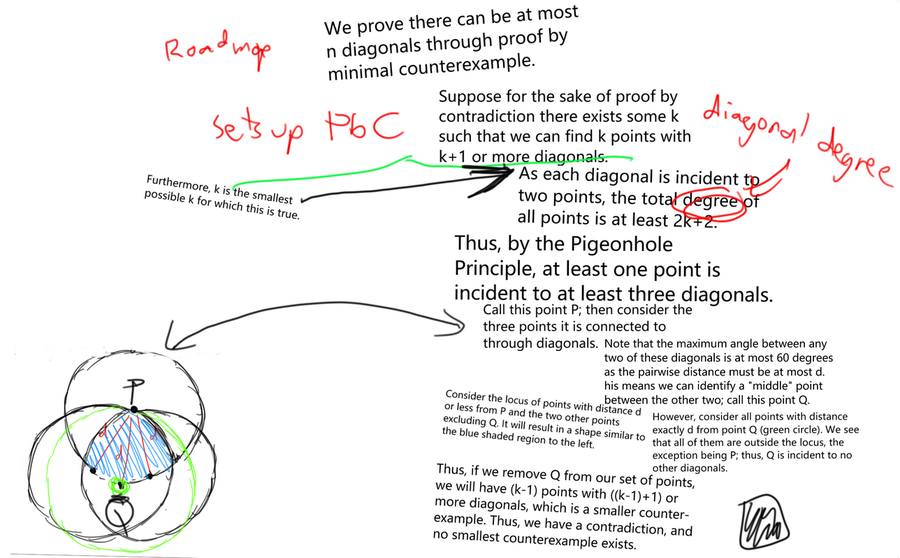Difference between revisions of "1965 IMO Problems/Problem 6"
| Line 42: | Line 42: | ||
== Solution (by user '''awe-sum''') == | == Solution (by user '''awe-sum''') == | ||
| + | [[File:problem_1965_6_sol_by_awe-sum.png|900px]] | ||
| + | == Solution 2 == | ||
| + | |||
| + | TO BE CONTINUED. SAVING MID WAY SO I DON'T LOOSE WORK DONE SO FAR. | ||
== See Also == | == See Also == | ||
{{IMO box|year=1965|num-b=5|after=Last Question}} | {{IMO box|year=1965|num-b=5|after=Last Question}} | ||
Revision as of 17:54, 29 October 2024
Contents
Problem
In a plane a set of ![]() points (
points (![]() ) is given. Each pair of points is connected by a segment. Let
) is given. Each pair of points is connected by a segment. Let ![]() be the length of the longest of these segments. We define a diameter of the set to be any connecting segment of length
be the length of the longest of these segments. We define a diameter of the set to be any connecting segment of length ![]() . Prove that the number of diameters of the given set is at most
. Prove that the number of diameters of the given set is at most ![]() .
.
Solution
Image of problem Solution. Credits to user awe-sum.
Remarks (added by pf02, October 2024)
1. As a public service, I will upload the "Image of problem Solution" to this web page. That way, a reader can see the "Solution" immediately, without having to go to another web site, and we are not subjected to the imgur.com website being taken down, or Imgur's parent company deciding to delete this particular image. Credits for the image are due to user awe-sum, as pointed out above.
2. This "Solution" is presented very badly, and edited very badly. Indeed, some terms are undefined, left to the reader to make sense of (e.g. "incident", "degree"). But let us be forgiving, and let us do our best to make sense of the "Solution".
3. The "Solution" is incomplete, to the point of not being a solution. Some serious questions are not addressed, and a reader can not be expected to fill in the details. These are:
a. The author says "... at least on point is incident to at least three diagonals." But, it could also happen that two points are "incident" to two diagonals each. The author does not address this possibility at all.
b. The author says "consider all points at distance exactly d from point Q (the green circle). We see that all of them are outside the locus, the exception being P." This is far from obvious. It assumes that all the other k-4 points (those points of the k given points which are not highlighted in the picture) are inside the "locus (the blue shaded region)". in fact, it seems to this reader that this is not necessarily true.
4. I will give another solution below, in the section "Solution 2".
Solution (by user awe-sum)
Solution 2
TO BE CONTINUED. SAVING MID WAY SO I DON'T LOOSE WORK DONE SO FAR.
See Also
| 1965 IMO (Problems) • Resources | ||
| Preceded by Problem 5 |
1 • 2 • 3 • 4 • 5 • 6 | Followed by Last Question |
| All IMO Problems and Solutions | ||










